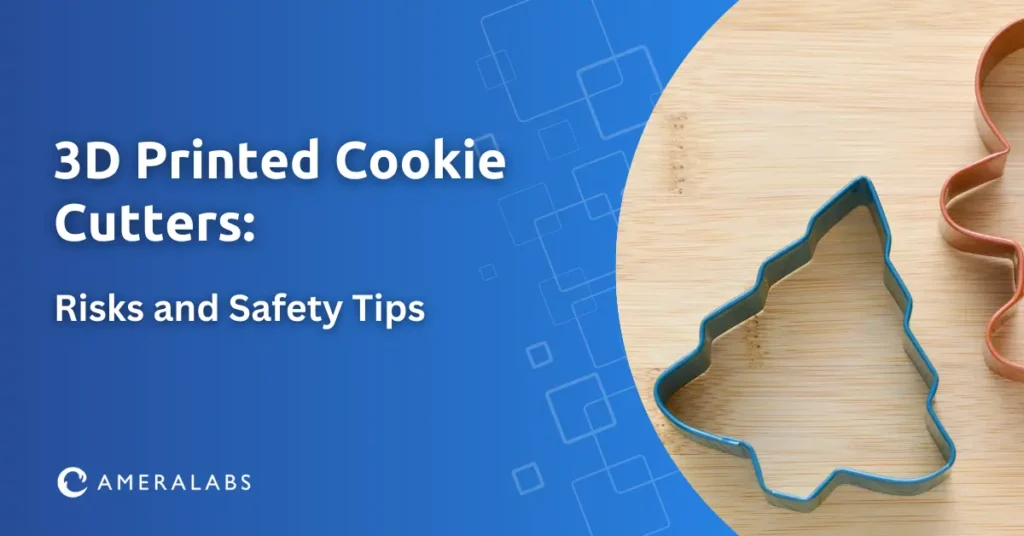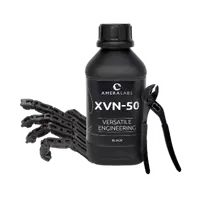Introduction to 3D Printed Cookie Cutters
3D printing is becoming a popular tool for bakers and DIY enthusiasts. It allows you to create custom cookie cutters in endless shapes and designs. From personalized patterns to seasonal themes, 3D printed cookie cutters bring creativity into your kitchen.

However, using 3D printed cookie cutters requires extra care. Unlike traditional metal or plastic cutters, these tools are made from materials that may not always be food-safe. Issues like chemical leaching, bacteria buildup, and material durability can pose risks if not properly addressed.
In this guide, we’ll explore the risks of using 3D printed cookie cutters. We’ll also provide easy-to-follow safety tips. By the end, you’ll know how to create safe 3D printed cookie cutters while enjoying the creative possibilities they offer.
Risks of Using 3D Printed Cookie Cutters
Using 3D printed cookie cutters can be a fun way to customize your baking, but it’s important to be aware of the potential risks. Improper material choices or inadequate cleaning can make these cutters unsafe for food contact. Below, we cover the main risks associated with filament and resin 3D printed cookie cutters.
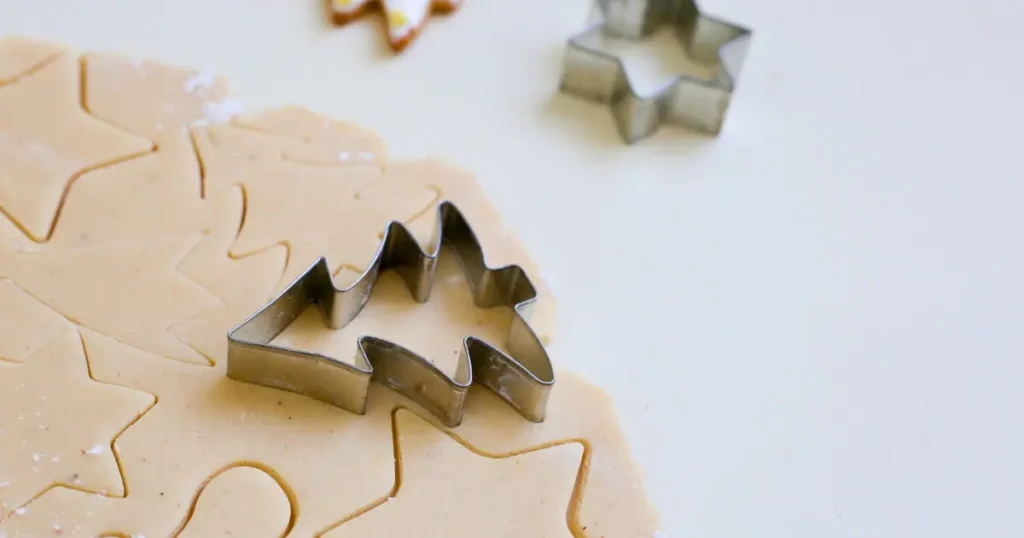
Leaching Chemicals in Filament and Resin Prints
Filament Printing (FDM): Many 3D printing filaments, like PLA and ABS, are not designed for direct food contact. Some filaments contain additives, dyes, or plasticizers that can leach into food, especially if they are not labeled as food-safe. PLA is generally considered safe, but issues arise with non-food-safe additives in filaments, which may not be tested for food safety. Always use food-safe certified filaments to minimize the risk of chemicals leaching into your baked goods.
Resin Printing (SLA): SLA (stereolithography) 3D printing offers exceptional detail and smooth surfaces by using UV light or lasers to cure liquid resin into solid plastic. However, no resin used in SLA printing is food-safe. In its liquid state, resin is highly toxic. Even when fully cured, SLA prints can still leach harmful chemicals, making them unsuitable for food contact. Using resin-printed items, like cookie cutters, poses significant health risks as these chemicals can contaminate your food.
Some may suggest using medical-grade resins for food-related projects, but we strongly advise against this. First, “medical grade” does not mean “food safe.” Medical-grade resins are engineered for specific applications like dental or medical devices and are not certified for direct contact with food. Second, medical-grade resins are prohibitively expensive and not practical for most DIY projects, especially considering the safety concerns that remain.
If you’re looking for a safer alternative, filament-based 3D printing is a better option for creating cookie cutters. Materials such as PLA or PETG can be food-safe, provided they are explicitly labeled as such. Even then, printed items may have microscopic crevices that can harbor bacteria. To minimize risks, thorough cleaning and applying a food-safe coating are necessary steps.
When it comes to creating tools for food preparation, always prioritize safety. Stick to certified food-safe materials and processes to ensure the health of those enjoying your creations. We will discuss only filament options and steps to make the cookie cutters safer in this guide.
Bacteria Trapped Between Layer Lines
FDM prints are created layer by layer, which leaves small grooves and crevices where bacteria can get trapped. If not cleaned thoroughly, these crevices can harbor bacteria, leading to contamination. Even though filaments like PLA can be food-safe, these bacteria-filled spaces can still pose a health risk if not carefully sanitized.
Temperature Sensitivity of 3D Printed Cookie Cutters
Many filaments, such as PLA, have low heat resistance, with a melting point around 180°C. While 3D-printed cookie cutters are not designed to endure the intense heat of an oven, they can still be affected by high temperatures in other ways. For example, exposure to warm dough, prolonged contact with hot water, or simply being left in a heated kitchen environment can cause the material to soften or warp. This can compromise the cutter’s shape, making it less effective and potentially ruining the design. Even small changes to the cutter’s edges can affect its ability to produce clean shapes in dough. To ensure the longevity and functionality of 3D-printed cookie cutters, it’s crucial to use them in cooler conditions and store them in a dry, temperature-stable environment.
Can You Wash 3D Printed Cookie Cutters in a Dishwasher?
It’s generally not recommended to wash 3D-printed cookie cutters in a dishwasher. High temperatures during the wash cycle, often exceeding 60°C, can cause materials like PLA to soften, warp, or deform due to their low heat resistance. Strong water jets may also damage delicate or intricate details on the cutter. Over time, repeated dishwasher cleaning can significantly reduce the cutter’s lifespan and effectiveness. Instead, hand washing with warm (not hot) soapy water is a much safer option. Use a soft brush to gently clean out any crevices where dough might be trapped. After washing, ensure the cutter is completely dry to prevent any moisture-related issues like warping or bacterial growth. Proper care and cleaning will help maintain the shape and usability of your 3D-printed cookie cutters for a long time.
Step-by-Step Guide to Safe Use of 3D Printed Cookie Cutters
To ensure that your 3D printed cookie cutters are safe for food use, follow this step-by-step guide. From choosing food-safe materials to cleaning, sanding, and proper storage, these steps will help you minimize risks and keep your baking tools in top condition.
Step 1: Choose Food-Safe Materials for 3D Printed Cookie Cutters
When creating cookie cutters or other tools intended for food contact, it’s best to use food-safe filaments like PLA or PETG. These materials are widely available and generally recognized as safe for this purpose. PLA is especially popular among home bakers because it is biodegradable and carries a lower risk of leaching harmful substances. For more guidance, 3DSolved offers an excellent article on selecting food-safe filaments, which provides valuable insights.
It’s crucial to avoid filaments that include additives such as fragrances, dyes, or plasticizers unless they are explicitly labeled as food-safe. These additives may be present in small amounts that do not require disclosure on the Material Safety Data Sheet (MSDS) due to regulatory thresholds. Additionally, exact material compositions are often treated as trade secrets, meaning some ingredients may not be listed. However, even in trace quantities, uncertified additives could pose potential risks when in contact with food. Always look for materials that are clearly marked as food-safe and certified for this use to ensure safety and peace of mind in your baking projects.
Step 2: Thorough Cleaning
Wash filament 3D printed cookie cutters thoroughly with hot water and dish detergent. Use a soft brush to clean out any debris from between the layers. A bleach solution can be used for extra sanitation. Make sure the cutter is completely dry before use.
- Wash filament 3D printed cookie cutters thoroughly with warm soapy water and mild dish detergent. Soap helps to remove bacteria and debris, especially from the crevices between the layers of filament. Use a soft brush, such as a toothbrush, to scrub any trapped residue.
- After cleaning, rinse thoroughly to remove all soap residue. Allow the cutter to dry completely before use.
For more detailed sanitation methods and material safety for 3D printed food applications, check out this Study on the Sanitization Efficacy.
Step 3: Sand and Smooth the Surface
Sand the surface of filament prints to smooth out rough edges, which can trap bacteria and make cleaning difficult. Use fine-grit sandpaper to ensure the surface is as smooth as possible.
- While sanding, be mindful not to damage the shape of the cutter. The goal is to make the surface easier to clean.
Step 4: Apply a Food-Safe Coating
- Consider applying a food-safe sealant or coating to your 3D printed cookie cutters. This can act as an extra barrier against bacteria and improve the ease of cleaning. More on food-safe sealants in an article on M3DZone.
- While useful, keep in mind that coatings wear away over time, so the protective layer may diminish. Reapply as necessary, especially on filament prints with visible layer lines.
- Food-Grade Film Alternative: You can also consider using food-grade film as a barrier between the dough and the cutter. Ensure that the film is intact before use. This is especially helpful if you’re concerned about the cutter’s surface not being perfectly smooth or if you’re using it multiple times. Just avoid printing cookie cutters with sharp edges that could damage the film.
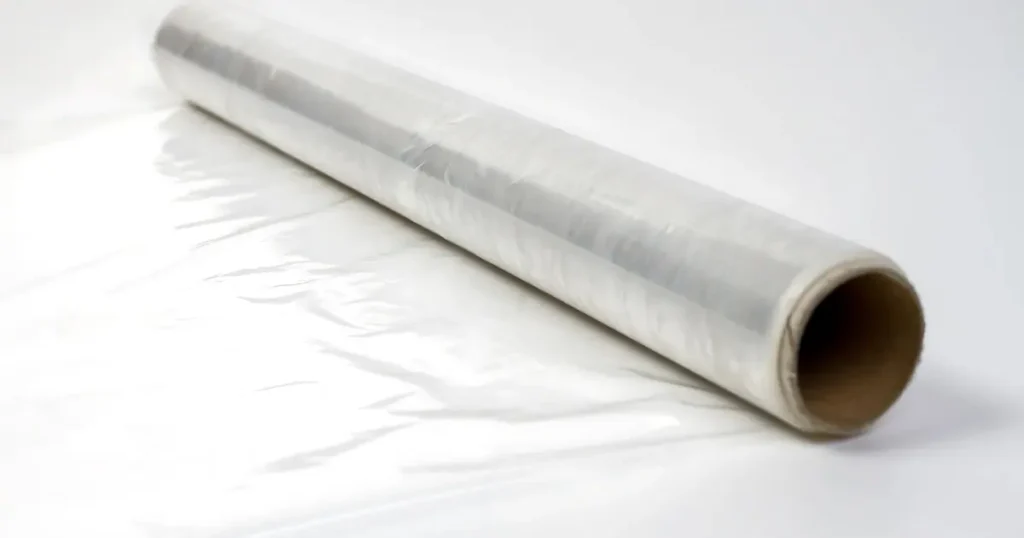
Our colleagues at Prusa have a guide on making food-grade 3D prints. The article offers great tips and insights.
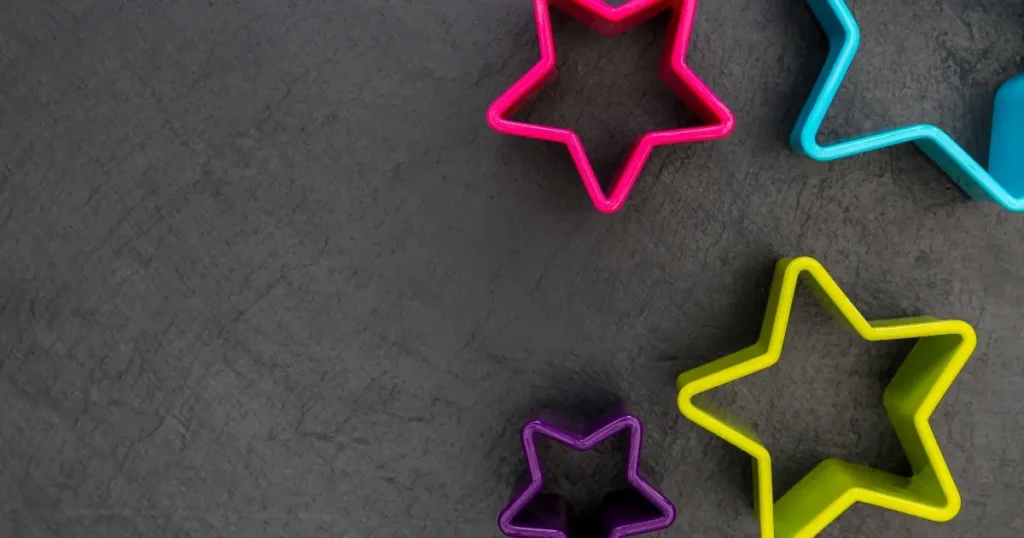
Step 5: Proper Storage and Handling 3D Printed Cookie Cutters
- Store 3D printed cookie cutters in a dry, clean place. Make sure they are completely dry before storing to avoid bacterial growth.
- Avoid storing them in humid environments; moisture can encourage bacterial or mold growth. Proper storage helps maintain the cutter’s cleanliness and longevity for future use.
- Single Use Recommendation: To minimize potential risks, we highly recommend using 3D printed cookie cutters only once. This approach helps reduce the chances of contamination, especially if you’re using the cutters multiple times for different batches of dough.
By following these steps, you’ll ensure that your 3D printed cookie cutters are safe for food contact and ready for your next baking project. While 3D printed cutters offer creative potential, safety should always be a top priority for food-related uses.
Bonus: Using SLA 3D Prints for Food Molds
SLA 3D prints are perfect for creating mold negatives that can be vacuum-formed into food-safe molds. Here’s a step-by-step guide:
Step 1: Print the Mold Design
Use an SLA printer to create the mold negative. SLA prints offer smooth surfaces, which are essential for creating high-quality molds.
Step 2: Clean the Print
Thoroughly clean the print with isopropyl alcohol to remove any residual resin. This ensures that the surface is free from contaminants before use in food applications.
Step 3: Apply a Food-Safe Coating
Consider applying a food-safe coating or sealant to the print to add an extra layer of protection and improve durability.
Step 4: Vacuum-Form the Food-Safe Plastic
Place the mold in a vacuum-forming machine and form the food-safe plastic around it. This creates a safe mold for food applications and perfect for baking, candy making, or other culinary uses.
This process allows you to harness the precision of SLA 3D printing while ensuring food safety.
When to Avoid 3D Printed Cookie Cutters
While 3D printed cookie cutters can be a fun and creative addition to your baking tools, there are certain situations where it’s best to avoid using them. Consider the following factors to ensure the safety and longevity of your baking tools.
Uncertainty About Material Safety
If the material used for the 3D printed cookie cutter is not clearly labeled as food-safe, or you’re unsure about the materials used, it’s best to avoid using the cutter for food contact. Materials without proper certification may contain harmful additives, dyes, or chemicals that could leach into your dough and pose health risks. Always check for food-safe markings or certifications before using 3D printed items for baking.
Heavy Use
Traditional materials like metal, plastic, or silicone are safer and more durable for frequent or high-volume baking. These materials are designed to withstand repeated use, cleaning, and exposure to heat. 3D printed cutters, on the other hand, may degrade over time, especially with frequent washing or exposure to high temperatures. The layers in 3D prints can wear down, causing rough edges and increasing the risk of bacterial buildup. Opt for cutters made from more durable materials, like stainless steel, for best results in a commercial or heavy-use setting.
Conclusion
To ensure safe use of 3D printed cookie cutters, always prioritize food-safe materials. Whether using food-safe filaments like PLA or PETG specifically designed for food contact, verifying that your prints are safe before using them with food is crucial. Proper cleaning, thorough washing, and applying a food-safe coating are essential steps to reduce risks.
While 3D printed cookie cutters open up a world of creative possibilities, safety should always come first. By following these steps, you can enjoy the fun of creating custom shapes without compromising food safety for you or your loved ones.
Excited to try out 3D printed cookie cutters? Follow our safety tips and get creative with your baking while keeping food safety at the forefront!
Related Posts:
- Uncover Resin Safety Myths in 3D Printing – Worried about resin safety? This clears up what’s legit.
- 3D Design Parts SLA 3D Printing – Want custom cutter shapes? This helps you design them easy.
- Resin 3D Printing Troubleshooting: A Comprehensive Guide – The ultimate guide to fix failed resin prints.
- Resin Mechanical Properties – Need a resin that holds up? This figures out what works.
- AmeraLabs Town Calibration Part – Calibration is your key to success.
Swing by our shop for resins that’ll make your prints a cinch!
